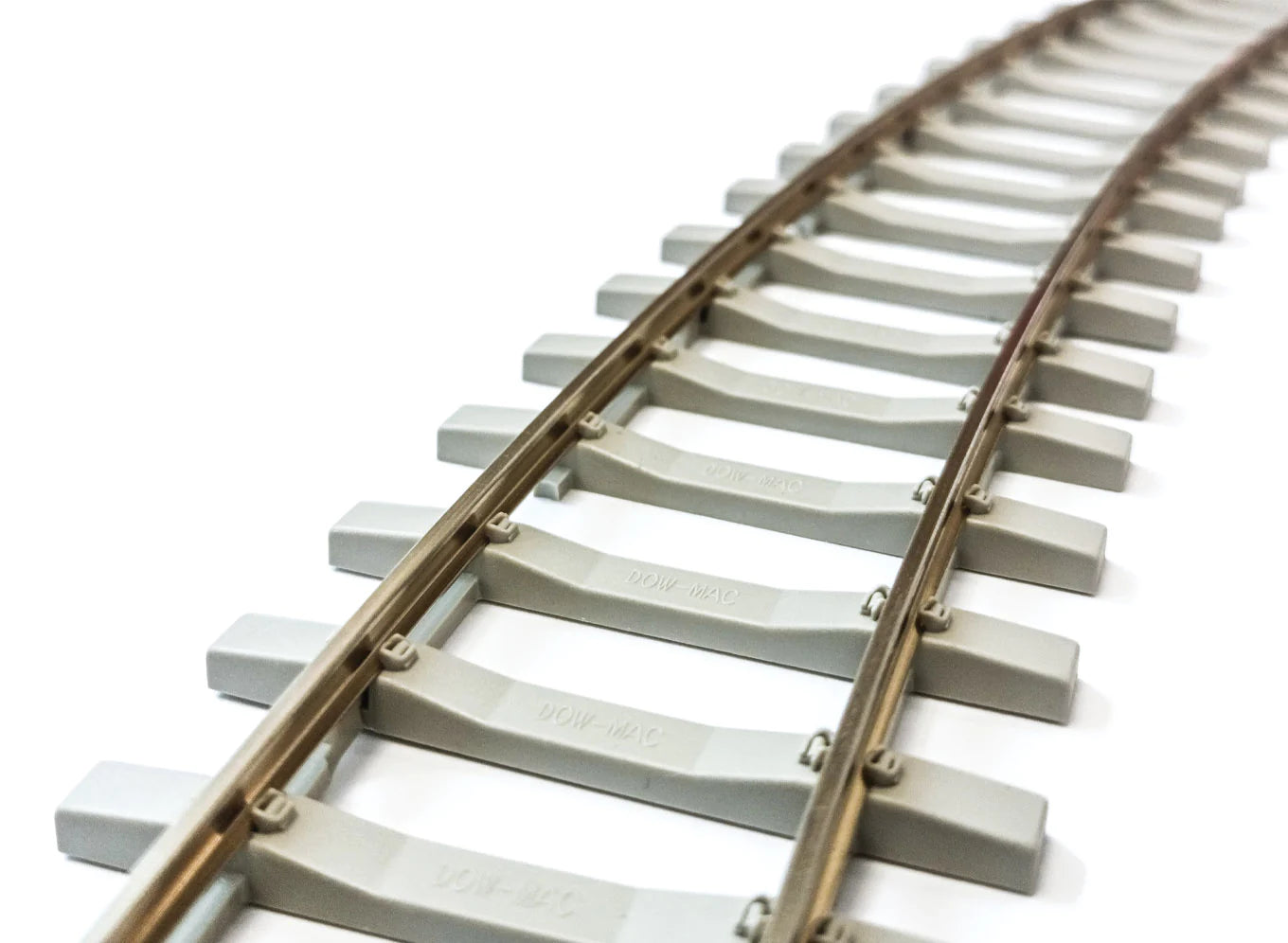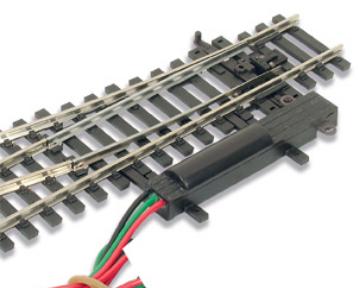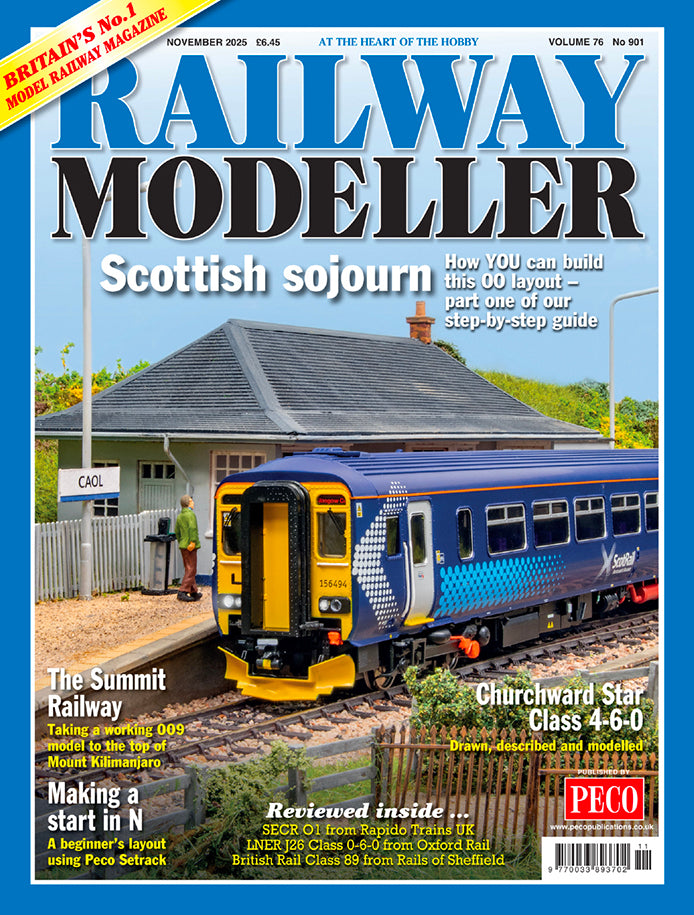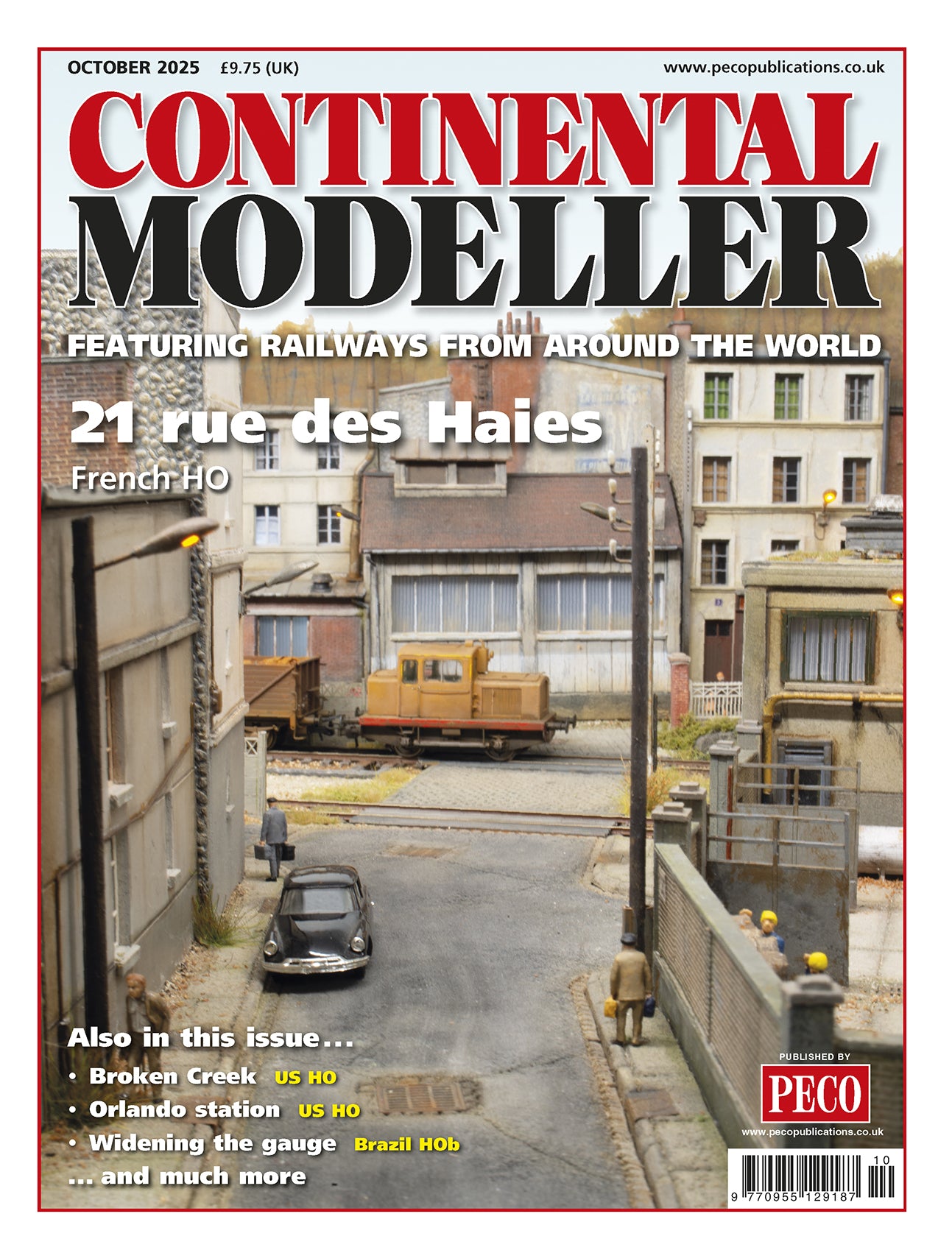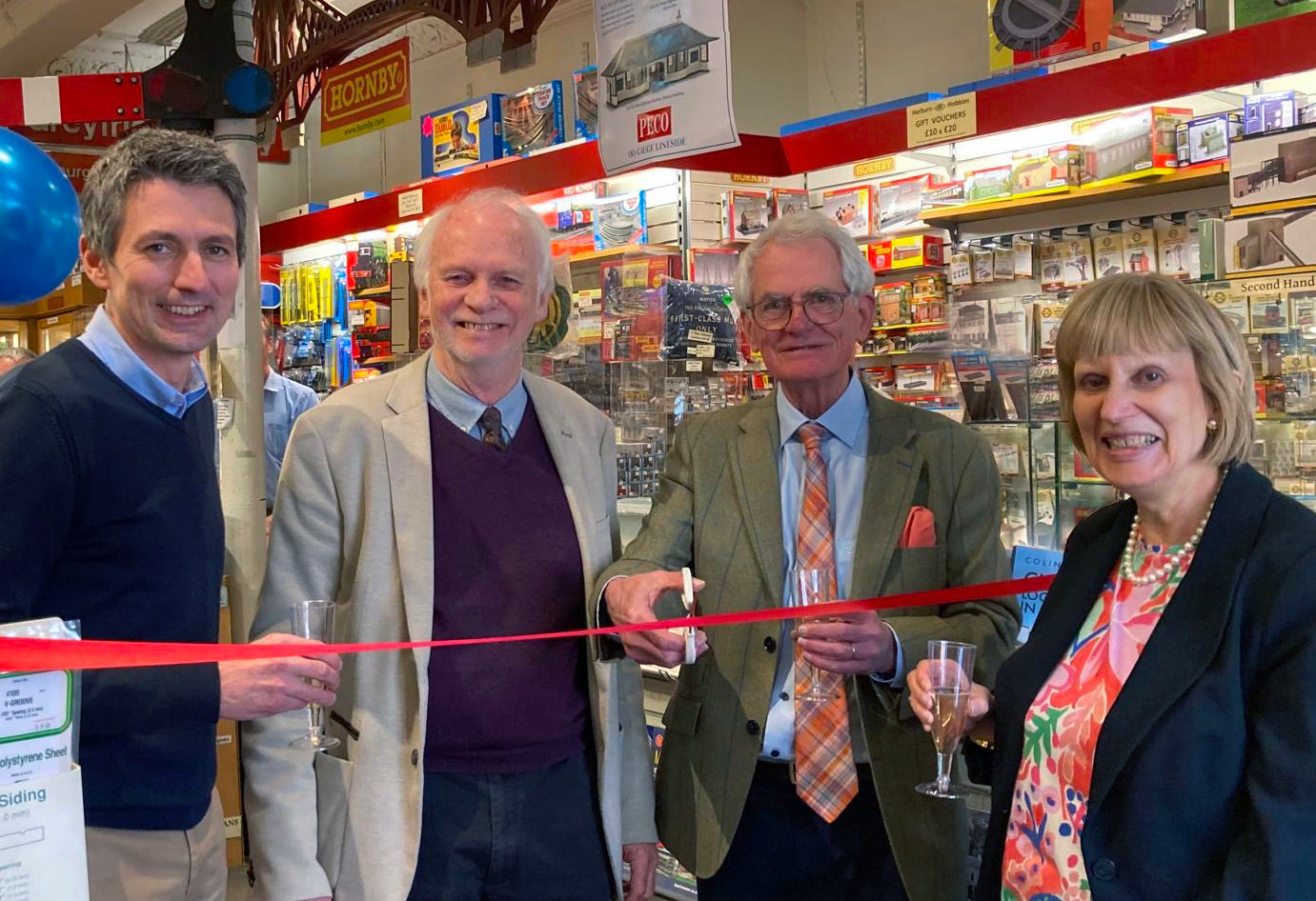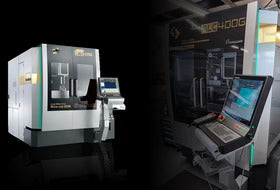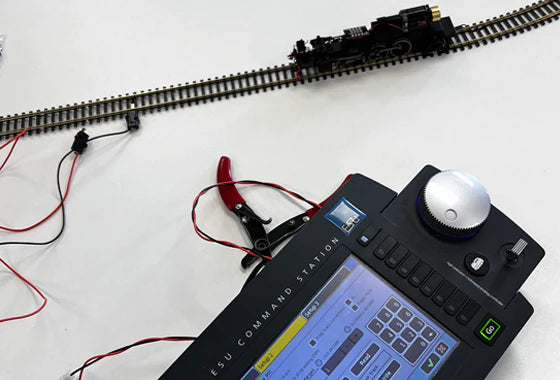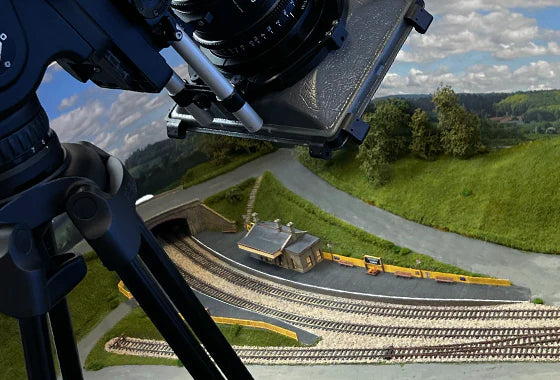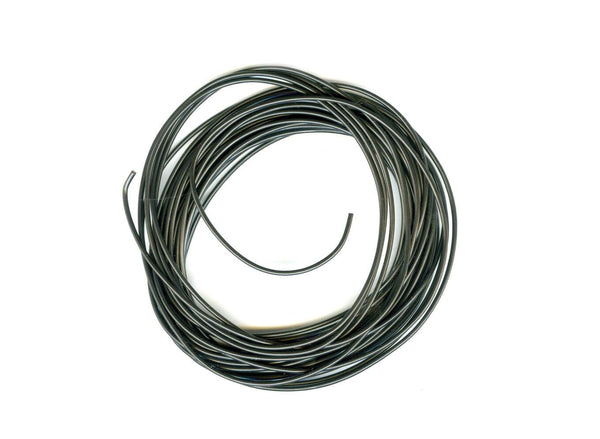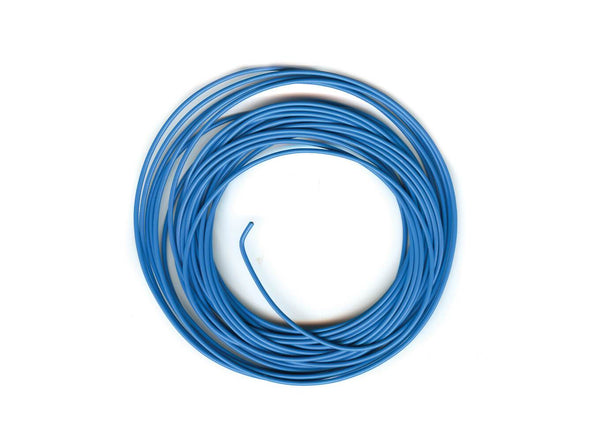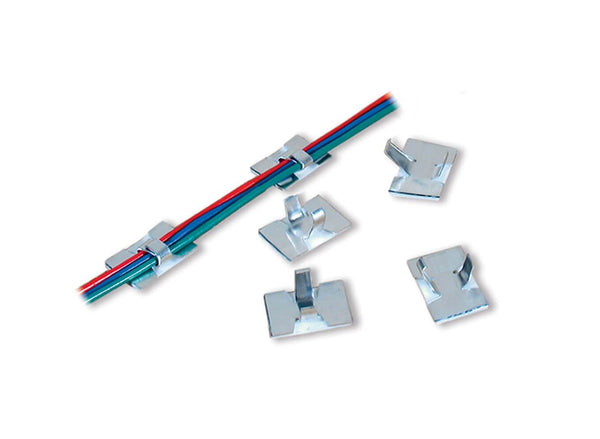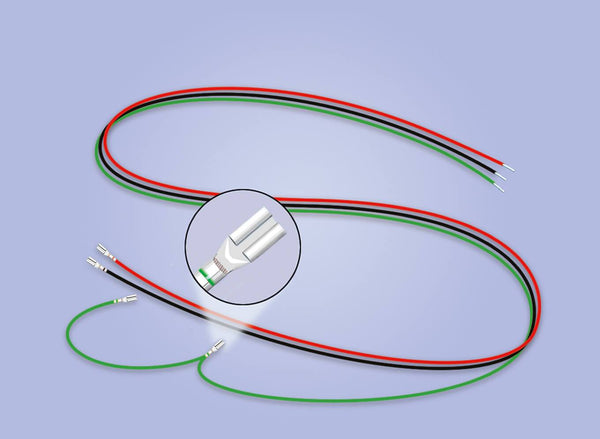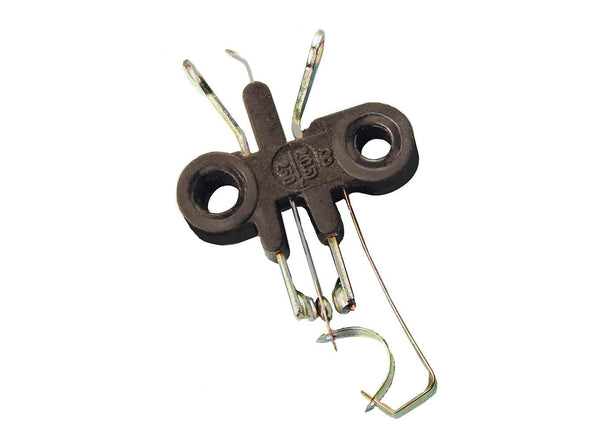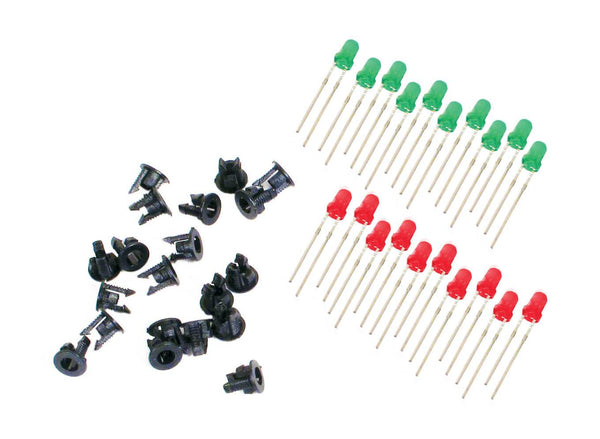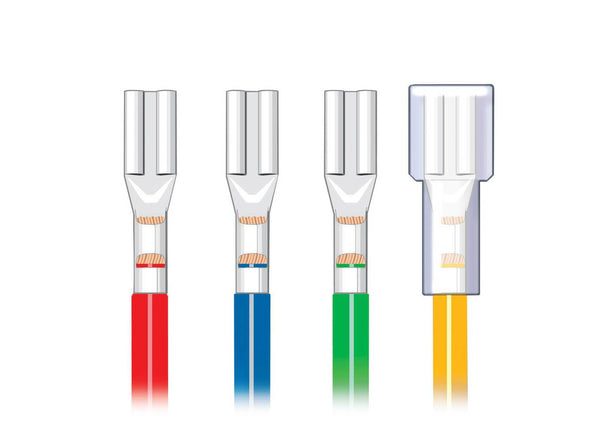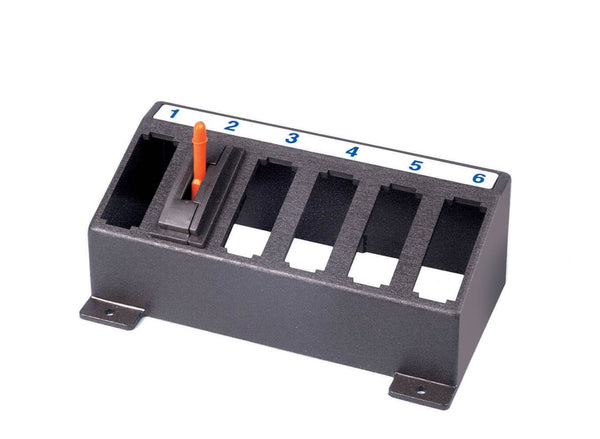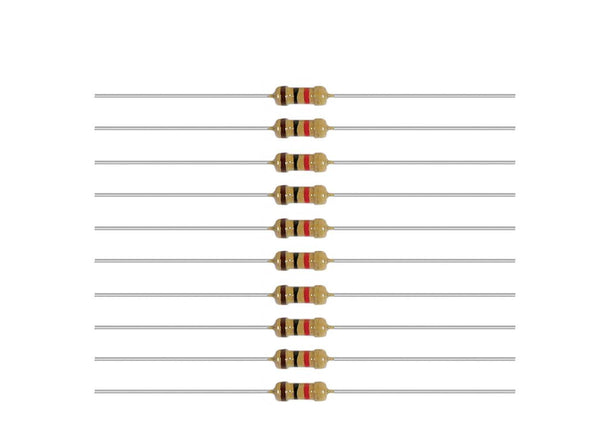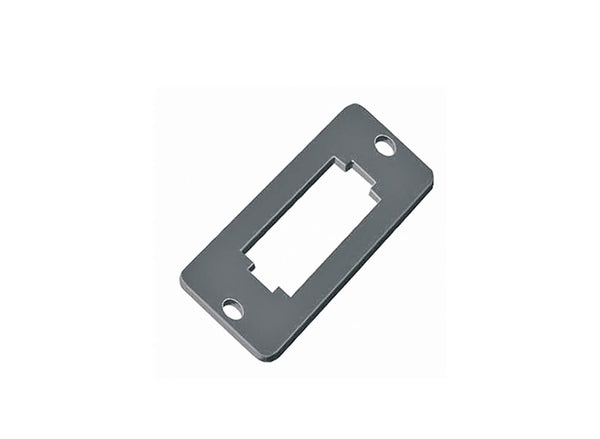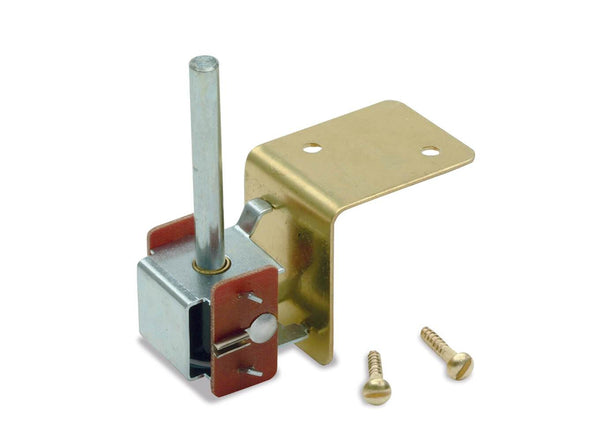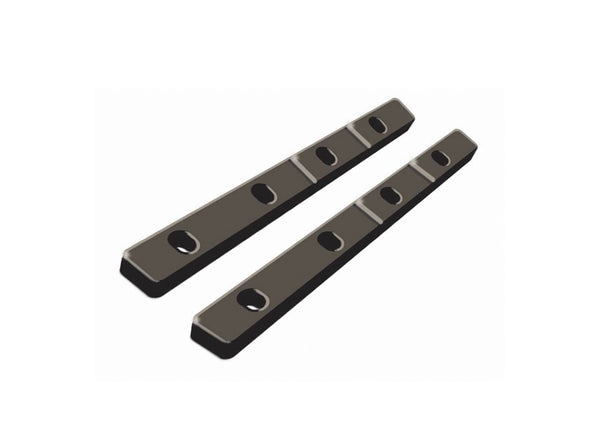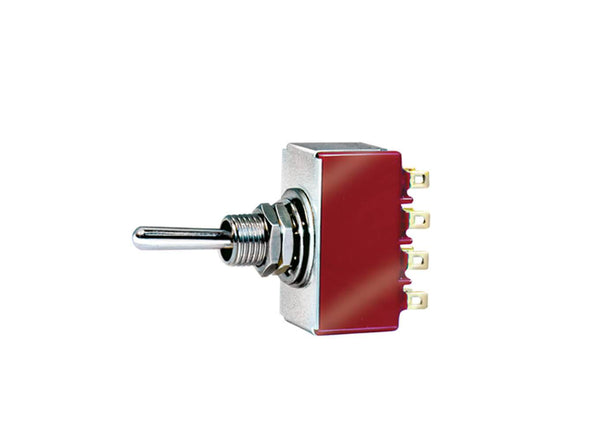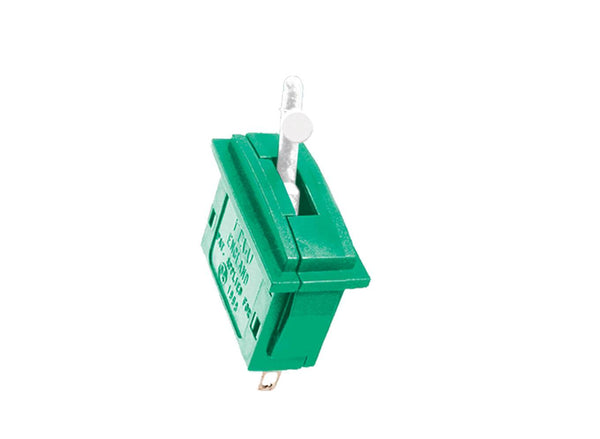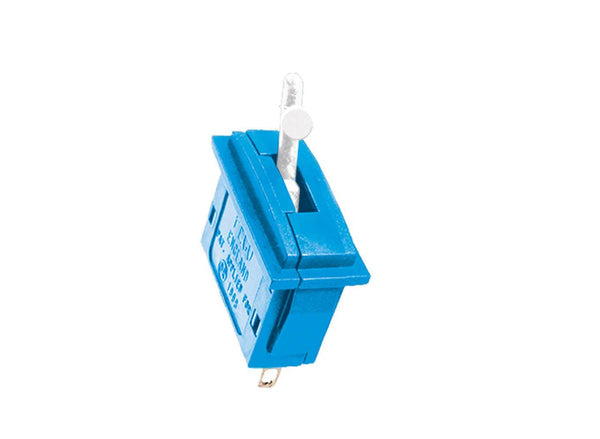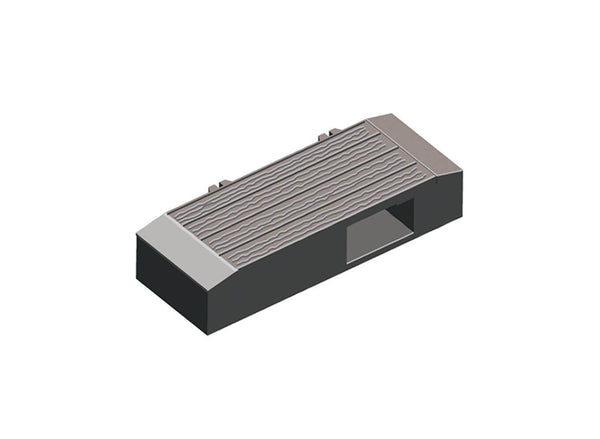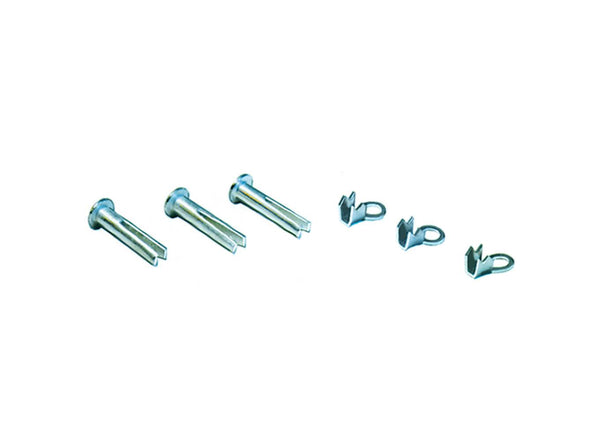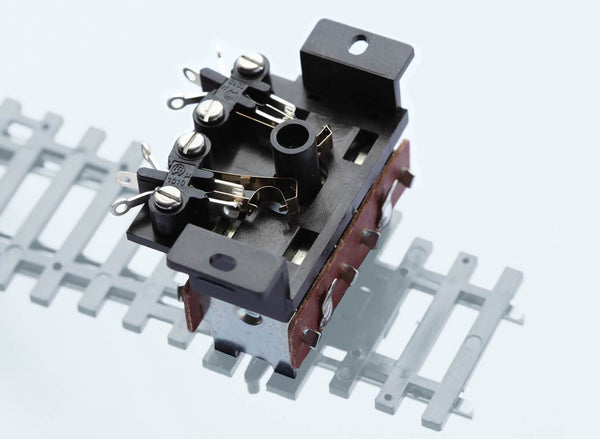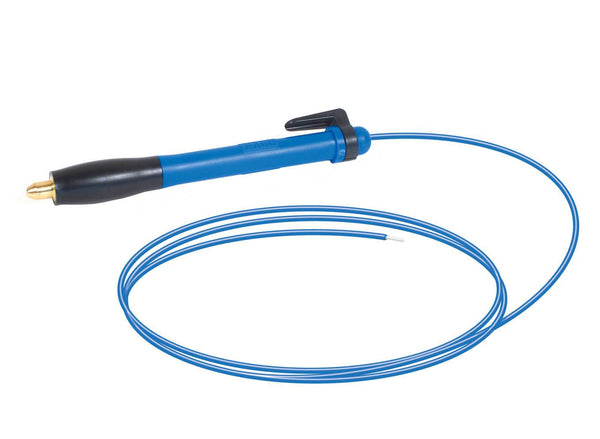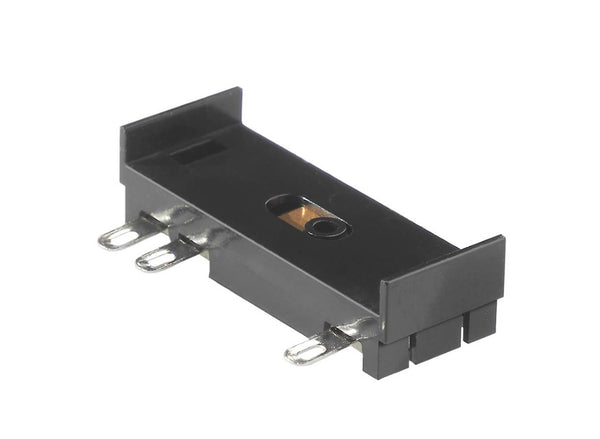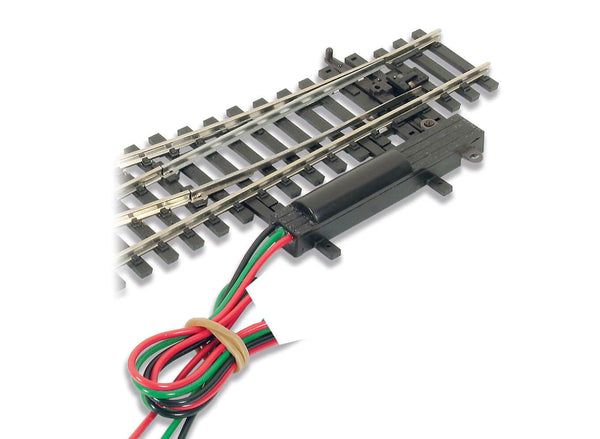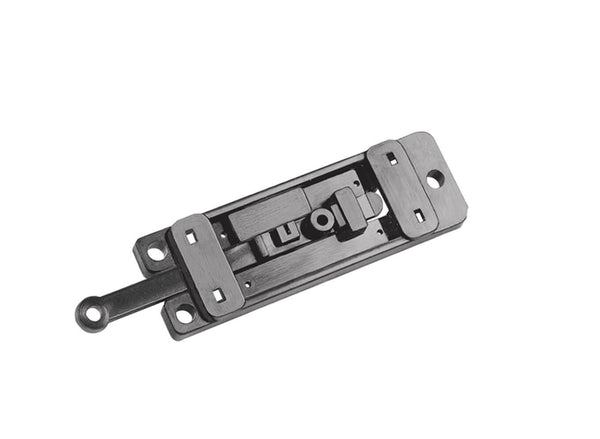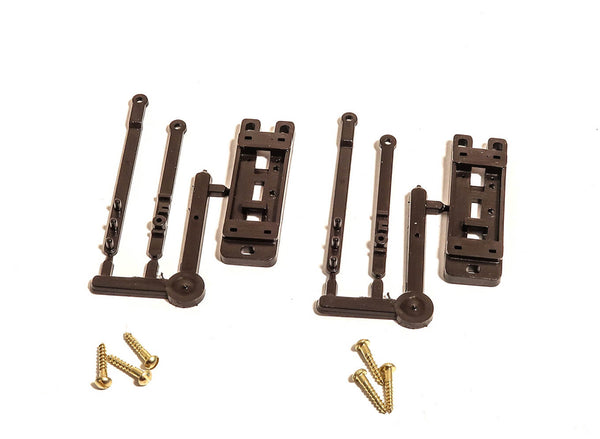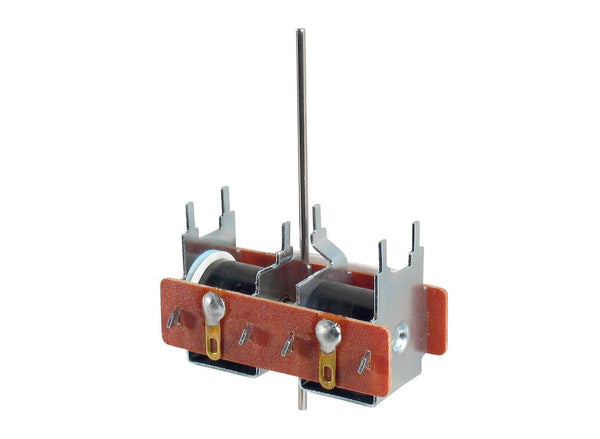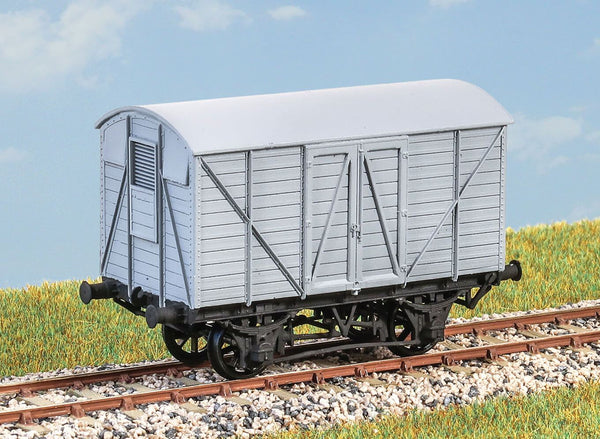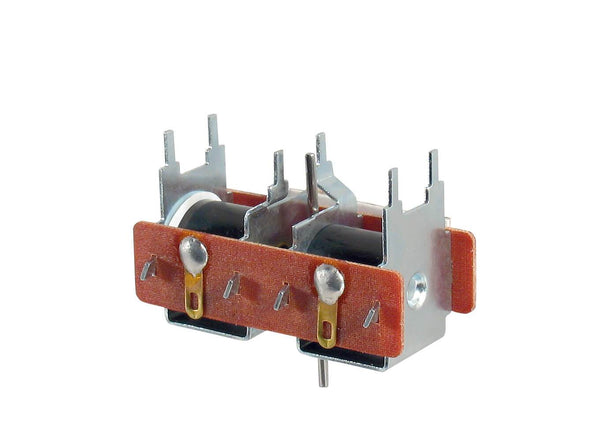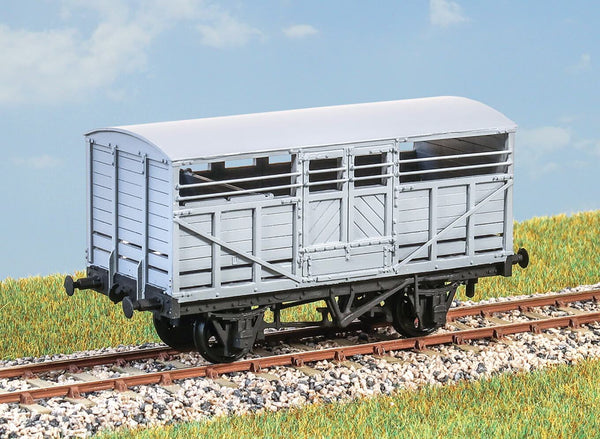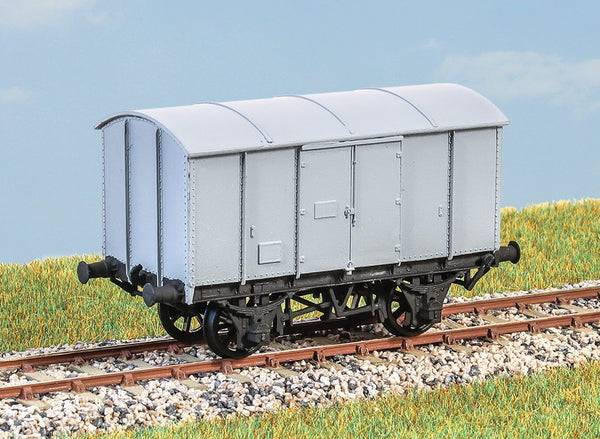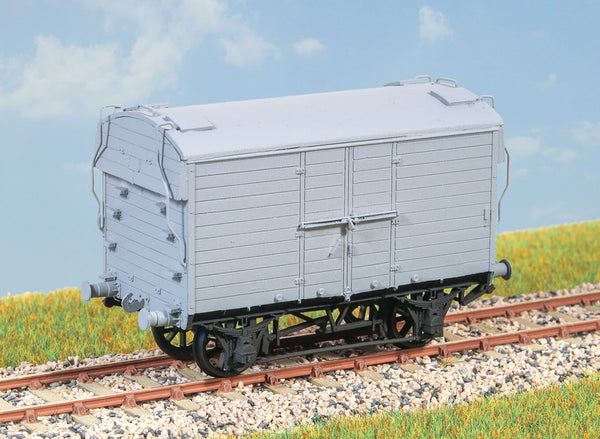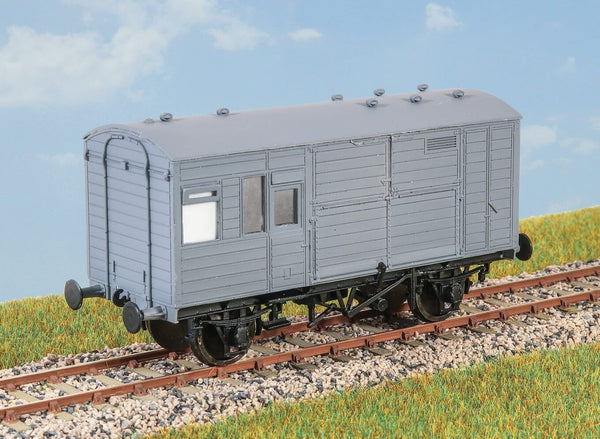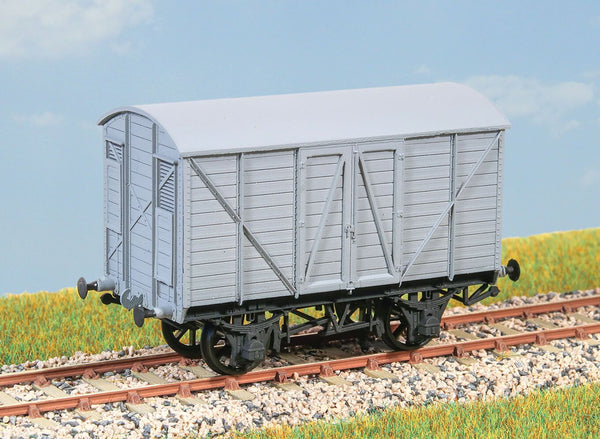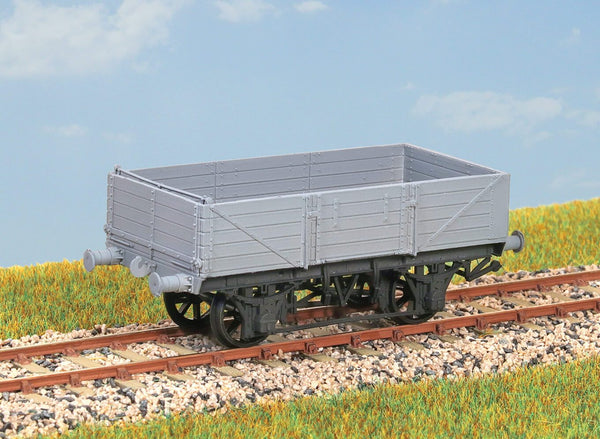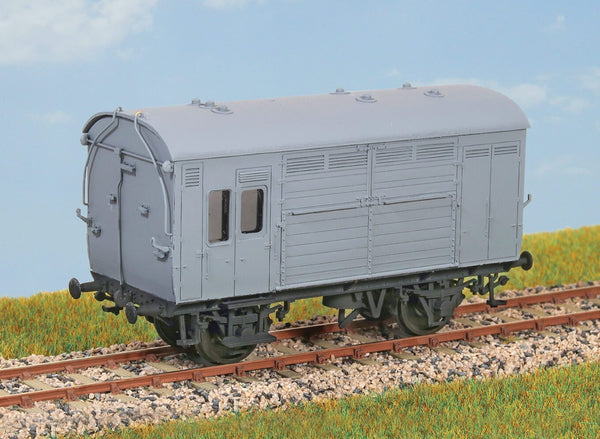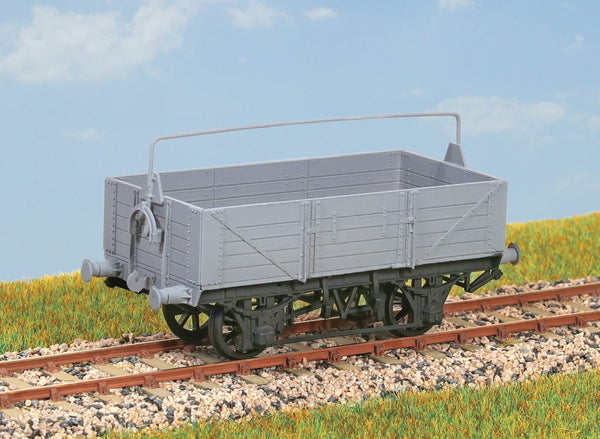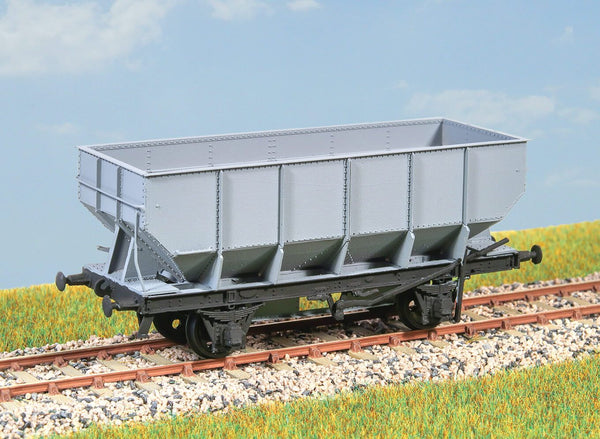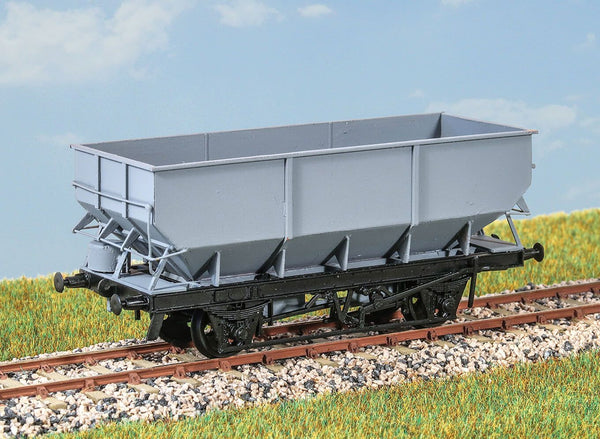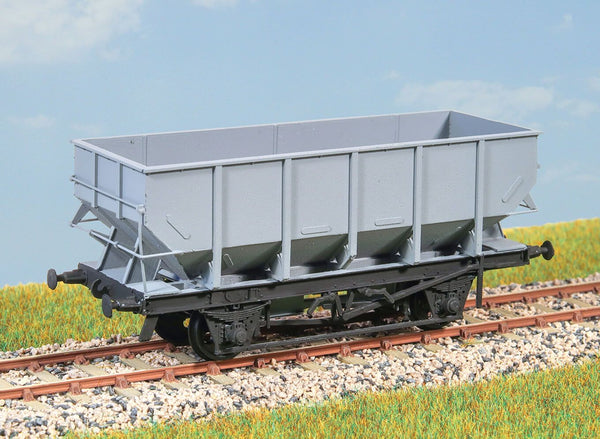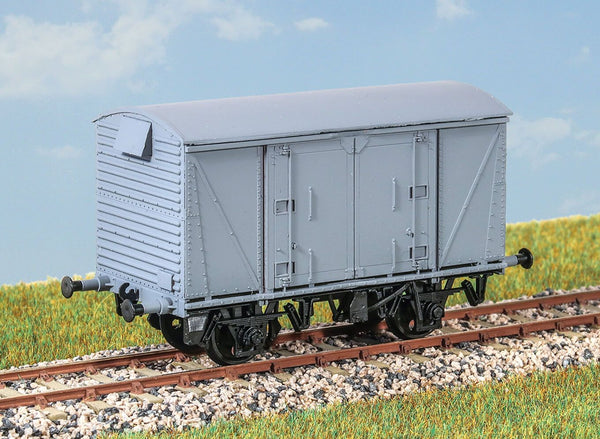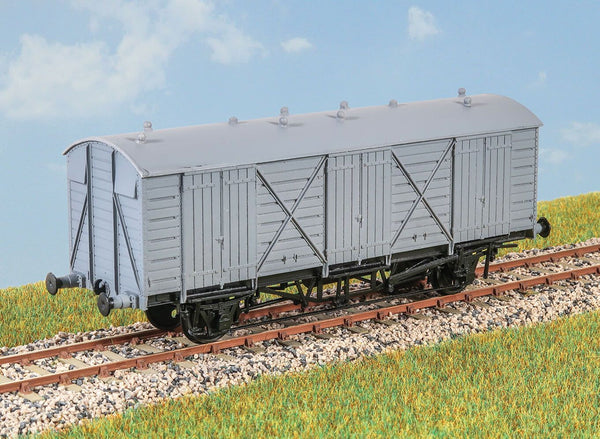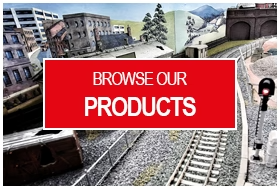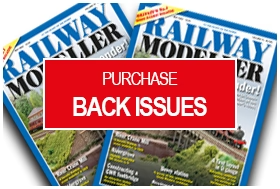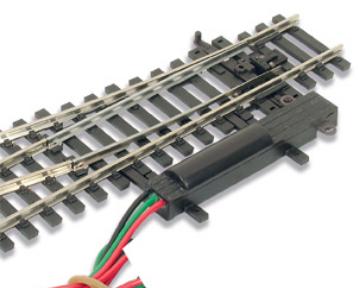BROWSE PECO PRODUCTS
Browse through our complete product portfolio.
2634 Products Found
Black Connecting Wire
The vital link. Your model railway will be so much easier to extend and maintain if you adopt a colour code scheme for the wiring.
Blue Connecting Wire
The vital link. Your model railway will be so much easier to extend and maintain if you adopt a colour code scheme for the wiring.
Cable Clips (Pack of 20)
Keep your wiring organised and tidy with these self adhesive clips. Pack of 20 clips
Capacitor Discharge Unit
For use with all solenoid motors (e.g. PL-10 and Pl-11). Connect this unit to the 16v ac supply on your transformer. The capacitor stores up power and discharges a 'kick' to ensure turnout blades 'snap over' every time.
Wiring Harness for PL-10 Series Turnout Motors
Makes wiring the PL-10 series of Motors quick and easy. Just a simple push fit onto the motor terminals; the other ends are tinned and ready for the PL-39 Terminal Block, PL-50 Switch Module Unit, or PL-31 Push on Terminal Connectors.
Closed Microswitch
Closed type, rated 16v 2amps (continuous) or 2.5amps (momentary). Use this microswitch with the PL-19 Microswitch Housing for polarity switching the SL-E790BH 0 Gauge Double Slip.
Open Microswitch
Open type, as used on the PL-15 Twin Microswitch. Rated 16v 2amps (continuous) or 2.5amps (momentary).
LED's
These can be used directly from terminals on the Smartswitch (TM) Control Board (PLS-120) and Smartfrog (PLS-130) to show route selection. They can also be powered via a 12v DC supply if the PL-29 Resistors are included in the circuit.
Terminal Connectors/Shrouds
Push on Terminal Connectors and shrouds. These connectors make modification and fault finding so much easier than soldered wiring. Use them to connect the PL-38 Wire to PL-26 Passing Contact Switches, PL-22 On/Off Switches, PL-23 On/On Switches, and PL-34 Wiring Looms to PL-26 Passing Contact Switches. They can also be used when connecting wires to other items, for example, PL-13 Accessory Switches, PL-15 Twin Microswitches, PL-10 Turnout Motors, and PL-32 and 33 Microswitches.
Switch Console
Houses 6 PL-26 Passing Contact Switches, PL-22 On/Off Switches or PL-23 On/On Switches.
Switch Mounting Plate
Use these when creating a diagrammatic control panel to clip fit PL-26 Passing Contact Switches, PL-22 On/Off Switches and PL-23 On/On Switches in the required place.
Yellow Passing Contact Switch
Provides the short burst of current required to operate the PL-11 and PL-10 series of Turnout Motors. The PL-31 Connectors are ideal for attaching the PL-34 Wiring Looms or PL-38 wire to these switches without soldering; the included Shrouds prevent current 'shorting out' between the terminals.
White Passing Contact Switch
Provides the short burst of current required to operate the PL-11 and PL-10 series of Turnout Motors. The PL-31 Connectors are ideal for attaching the PL-34 Wiring Looms or PL-38 wire to these switches without soldering; the included Shrouds prevent current 'shorting out' between the terminals.
Red Passing Contact Switch
Provides the short burst of current required to operate the PL-11 and PL-10 series of Turnout Motors. The PL-31 Connectors are ideal for attaching the PL-34 Wiring Looms or PL-38 wire to these switches without soldering; the included Shrouds prevent current 'shorting out' between the terminals.
Black Passing Contact Switch
Provides the short burst of current required to operate the PL-11 and PL-10 series of Turnout Motors. The PL-31 Connectors are ideal for attaching the PL-34 Wiring Looms or PL-38 wire to these switches without soldering; the included Shrouds prevent current 'shorting out' between the terminals.
Decoupler Electro Magnetic Unit
A useful remote operating feature for use with Peco N Gauge ELC couplings, or other N gauge couplings that do not incorporate a spring. 16 unobtrusive Coupling Lift Arms are supplied with this unit (NR-103 Coupling Lift Arms pack contains 32 if more are required). The uncoupler creates a temporary magnetic field which attracts the steel lift arm down, thereby pivoting the coupling upwards to decouple (at other times trains run through unaffected). A 16v AC supply is required, operated by a non latching push button (not included). Installation is simple, just drill a small hole in the centre of the trackbed and fit the unit under the baseboard with 2 screws. Full instructions included.
Switch Joining Bars
Allows adjacent switches in the PL-27 Switch Console and PL-50/51 Switch Module Unit to be ganged together and operated simultaneously.
Switch 4-Pole Double Throw
Use this switch to control the polarity on the N Gauge Code 55 SL-E383F Scissors Crossover. See Shows You How Booklet Wiring the Layout No 21 for a comprehensive colour coded diagram.
Single Pole Changeover Switch (On/On)
Single Pole On/On Switch. Use this to switch power from one device to another or for operating items such as 2 aspect colour light signals.
On/Off Switch
Single Pole On/Off Switch. Use this to control features such as lighting circuits, or as a section switch where only 1 controller is used.
Microswitch Housing
This plugs directly into a ready made recess on the 0 gauge Double Slip SL-E790BH to house a PL-33 Microswitch to operate the polarity switching.
Stud and Tag Washers for Turnout Motor operation
A simple yet effective method of switching turnouts. The PL-18 Studs are inserted into the control panel, often laid out as a layout diagram. A wire is then soldered to the tag at the back, which goes to the relevant solenoid of the turnout motor. When power is applied by touching the powered PL-17 probe on the stud the Turnout Motor is activated.
Track Isolating Switch
Clip this unit either side of an insulation gap on Peco H0/00 track. This can be used to isolate a loco at the end of a terminal road or siding, thereby enabling another loco to take the stock out. This is available as a ready made item in the Peco 00 Setrack range (ST-205/2005).
Turnout Motor Mounting Twin Microswitch
This fits directly to the PL-10 family of Turnout Motors. The 2 single pole changeover switches can be used to control polarity, route selection diagrams, or 2 aspect colour light signalling etc. Rated 16v 2amps (continuous) or 2.5amps (momentary).
Probe for operating Turnout Motors
A simple yet effective method of switching turnouts. The PL-18 Studs are inserted into the control panel, often laid out as a layout diagram. A wire is then soldered to the tag at the back, which goes to the relevant solenoid of the turnout motor. When power is applied by touching the powered PL-17 probe on the stud the Turnout Motor is activated.
Accessory Switch (Turnout Motor Mounting)
Attaches directly to the PL-10 family of Turnout Motors with contact adhesive. This single pole switch can control frog polarity, ground signals etc. PL-31 Spade Connectors can be used to attach wires to these units without the need for soldering.
Side Mounted Turnout Motor
Clips directly into a Peco 00/H0 Setrack Turnout, either Left or Right Hand. No holes to drill, and this unit is pre wired. Can also be used with 00/H0 Streamline Turnouts.
Turnout Motor Adaptor Base with over centre spring.
This unit enables a PL-10 Turnout Motor to be mounted on the surface of the baseboard, an optional extension arm is also included. A removable over centre spring is fitted, useful for turnouts which do not have this feature.
Turnout Motor Adaptor Base without over centre spring
2 Adaptor Bases are included, with optional extension arms, to enable PL-10 Turnout Motors to be mounted on the surface of the baseboard. This unit relies on the over centre spring in the turnout to keep the blades against the stock rail.
Turnout Motor with Extended Operating Pin
The PL series of Turnout Motors is tried and tested, over the last 40 years we have sold literally millions of these motors. Simple, reliable and good value. An extended drive pin is fitted, use the PL-9 Mounting Plate to attach this unit to the underside of the baseboard. Attaching PL-13 and 15 Switches will enable switching for automatic polarity etc.
LNER 20ton Brake Van Toad E
900 of these vans were built between 1930 and 1936. Seen all over the former LNER system, they lasted in service into the mid 1960s. These finely moulded plastic wagon kits come complete with pin point axle wheels and bearings. Glue and paint will be required, along with appropriate transfers. Additional parts to enable the vehicle to be modelled incorporating modifications made to the prototypes during their working life are included where appropriate.
GWR 10ton Banana Van
The GWR introduced a fleet of these vans (diagram Y4) in the early 1920s. These vans could still be seen in service into the 1950s. These finely moulded plastic wagon kits come complete with pin point axle wheels and bearings. Glue and paint will be required, along with appropriate transfers. Additional parts to enable the vehicle to be modelled incorporating modifications made to the prototypes during their working life are included where appropriate.
Turnout Motor
The PL series of Turnout Motors is tried and tested, over the last 40 years we have sold literally millions of these motors. Simple, reliable and good value. Requires a rectangular hole 40mm x 24mm when clipped directly to the underside of a Peco Turnout. Use the PL-12/12X if above baseboard mounting is required; attaching PL-13 and 15 Switches will enable switching for automatic polarity etc.
LMS Cattle Wagon
The LMS built 2050 of these wagons (diagram 1661) between 1923 and 1926. They lasted in use until the early 1960s. These finely moulded plastic wagon kits come complete with pin point axle wheels and bearings. Glue and paint will be required, along with appropriate transfers. Additional parts to enable the vehicle to be modelled incorporating modifications made to the prototypes during their working life are included where appropriate.
GWR 10ton Gunpowder Van
These gunpowder vans (diagram Z2) were built between 1913 and 1926 to carry gunpowder and other explosives. Examples lasted until around 1960. These finely moulded plastic wagon kits come complete with pin point axle wheels and bearings. Glue and paint will be required, along with appropriate transfers. Additional parts to enable the vehicle to be modelled incorporating modifications made to the prototypes during their working life are included where appropriate.
GWR 6ton Insulated Van
‘Mica B’ X7 These vans were built in 1921 - 1923 to carry fresh or chilled meat. Some vans were converted to TEVANS in the 1930s. Most survived into Nationalisation in 1948 and a few into the early 1960s. These finely moulded plastic wagon kits come complete with pin point axle wheels and bearings. Glue and paint will be required, along with appropriate transfers . Additional parts to enable the vehicle to be modelled incorporating modifications made to the prototypes during their working life are included where appropriate.
LNER Horse Box Wagon
30 of these horse boxes (diagram 5) were built by the LNER in 1938, mainly to carry racehorses to meetings throughout Britain. Many lasted into the early 1960s. These finely moulded plastic wagon kits come complete with pin point axle wheels and bearings. Glue and paint will be required, along with appropriate transfers. Additional parts to enable the vehicle to be modelled incorporating modifications made to the prototypes during their working life are included where appropriate.
GWR 10ton Goods Van
10 ton Goods Van ‘Mink/Mink A’ V12, V14 and V16 Built between 1907 and 1927. Used for general goods traffic throughout the British railway system. In service until around 1960, later in departmental use. These finely moulded plastic wagon kits come complete with pin point axle wheels and bearings. Glue and paint will be required, along with appropriate transfers. Additional parts to enable the vehicle to be modelled incorporating modifications made to the prototypes during their working life are included where appropriate.
GWR 00 12ton China Clay Wagon
500 of these wagons (diagram O13) were built in 1913. Used for short run traffic in Cornwall and to carry china clay to potteries and paper mills. Final withdrawal took place in the late 1950s. These finely moulded plastic wagon kits come complete with pin point axle wheels and bearings. Glue and paint will be required, along with appropriate transfers. Additional parts to enable the vehicle to be modelled incorporating modifications made to the prototypes during their working life are included where appropriate.
GWR Horse Box Wagon
Diagram N13. 300 of these were built in the 1920s with many lasting into the 1950s and 60s. Seen throughout Britain carrying horses to racecourses and stables, invariably marshalled in passenger or parcel trains. These finely moulded plastic wagon kits come complete with pin point axle wheels and bearings. Glue and paint will be required, along with appropriate transfers. Additional parts to enable the vehicle to be modelled incorporating modifications made to the prototypes during their working life are included where appropriate.
GWR 10ton Open Goods Wagon
(Diagram O11/15) Over 12000 were built between 1909 and 1922. 011 had hand brake only and 015 wagons had the vacuum brake. Examples lasted into the 1950s. These finely moulded plastic wagon kits come complete with pin point axle wheels and bearings. Glue and paint will be required, along with appropriate transfers. Additional parts to enable the vehicle to be modelled incorporating modifications made to the prototypes during their working life are included where appropriate.
LNER 20ton Hopper Wagon
13,645 of these wagons were built. Features the unique LNER brake gear. Represents the batch of 409 built by Hurst Nelson in 1936. Examples lasted into the 1970s. These finely moulded plastic wagon kits come complete with pin point axle wheels and bearings. Glue and paint will be required, along with appropriate transfers. Additional parts to enable the vehicle to be modelled incorporating modifications made to the prototypes during their working life are included where appropriate.
BR 21ton Rebodied Hopper Wagon
21 ton Rebodied Hopper Wagon (Vac. Braked) In the 1970s BR started to put new bodies on hopper wagons built in the 1940s and 1950s. Some ran with vacuum brakes. Examples lasted into the 1990s. These finely moulded plastic wagon kits come complete with pin point axle wheels and bearings. Glue and paint will be required, along with appropriate transfers . Additional parts to enable the vehicle to be modelled incorporating modifications made to the prototypes during their working life are included where appropriate.
BR 21ton Coal Hopper Wagon
Diagram 1/146. 16,800 were built between 1952 and 1958. They were widely used for coal traffic especially in North East England. Common well into the 1980s. The kit has a choice of roller and oil axleboxes. These finely moulded plastic wagon kits come complete with pin point axle wheels and bearings. Glue and paint will be required, along with appropriate transfers. Additional parts to enable the vehicle to be modelled incorporating modifications made to the prototypes during their working life are included where appropriate.
BR Van 'Vanwide' with Air Brake
VEA ex Vanwide (Air Brake and FAT19 Suspension) In the late 1970s several hundred Vanwides were upgraded with air brakes and improved suspension for use in Speedlink trains. Used into the 1990s. These finely moulded plastic wagon kits come complete with pin point axle wheels and bearings. Glue and paint will be required, along with appropriate transfers. Additional parts to enable the vehicle to be modelled incorporating modifications made to the prototypes during their working life are included where appropriate.
GWR 'Fruit D' Van
This was the final design of the GWR Fruit Van (diagram Y11) of which 50 were built in 1939-1941. More were built by BR in the 1950s and some were in service into the 1970s. These finely moulded plastic wagon kits come complete with pin point axle wheels and bearings. Glue and paint will be required, along with appropriate transfers. Additional parts to enable the vehicle to be modelled incorporating modifications made to the prototypes during their working life are included where appropriate.
RCH 1923 Design 5 Plank Mineral Wagon
5-plank 12 ton Mineral Wagon (Fixed Ends) RCH 1923 Built in the 1920s to carry roadstone, built to a Charles Robert design with steel sheet floor. Some lasted into the 1960s. These finely moulded plastic wagon kits come complete with pin point axle wheels and bearings. Glue and paint will be required, along with appropriate transfers. Additional parts to enable the vehicle to be modelled incorporating modifications made to the prototypes during their working life are included where appropriate.
